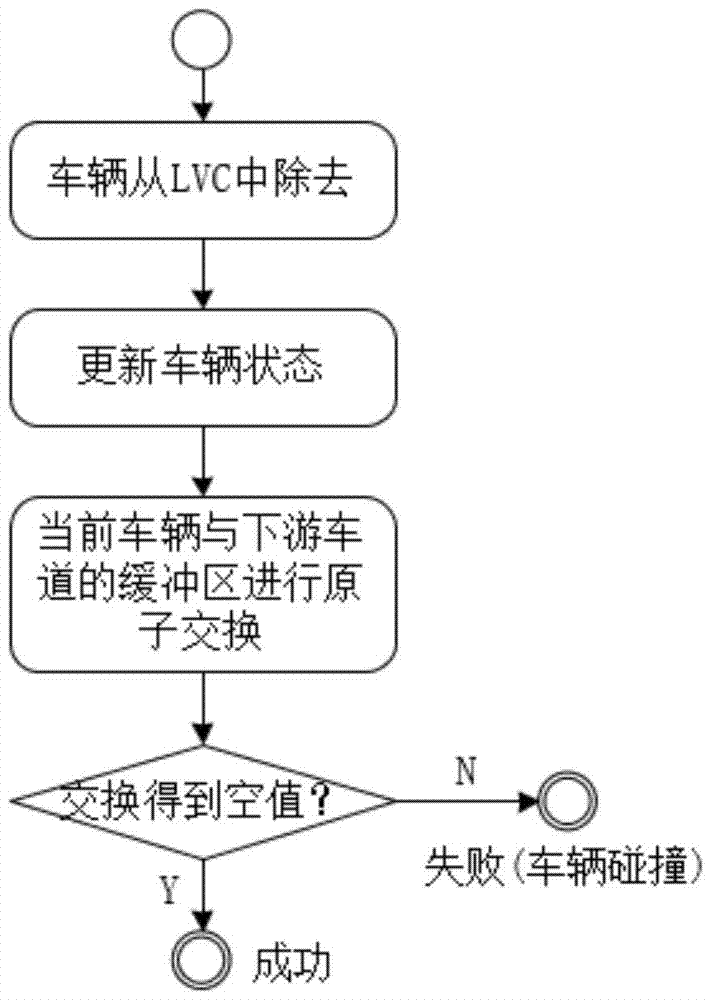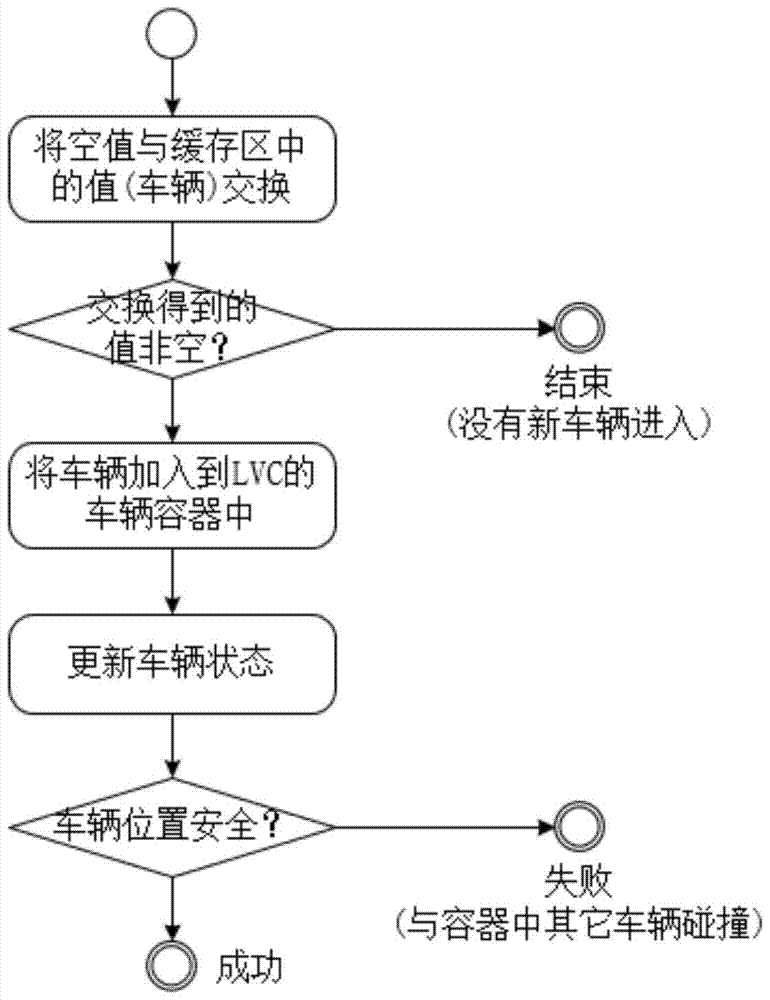Non-blocking Vehicle Movement Method in Parallel Microscopic Traffic Simulation
A micro-traffic simulation and vehicle movement technology, applied in the field of micro-traffic simulation and system simulation, can solve problems such as difficulty in balancing thread load, high computer performance requirements, and failure to achieve hardware performance, to meet real-time simulation, eliminate synchronization overhead, The effect of improving overall performance
- Summary
- Abstract
- Description
- Claims
- Application Information
AI Technical Summary
Problems solved by technology
Method used
Image
Examples
Embodiment Construction
[0021] The present invention will be described in further detail below in conjunction with the accompanying drawings.
[0022] A non-blocking vehicle moving method in a parallel micro-traffic simulation of the present invention comprises the following steps:
[0023] (1) Simulation initialization stage, including the following sub-steps:
[0024] (1.1) Create a vehicle management device (LVC) for each lane in each road segment.
[0025] The vehicle management device (hereinafter referred to as LVC) is used to manage the vehicles on the lane, and its structure is as follows: figure 1 As shown, it consists of two parts: a buffer, which can hold at most a pointer to a vehicle object, and is used to save the vehicle that has just entered from the upstream of the lane; a vehicle container, which is used to save the vehicles on the lane, and the vehicles are in the order of their positions Sort. In the simulation initialization stage, it is necessary to create an LVC for each lan...
PUM
 Login to View More
Login to View More Abstract
Description
Claims
Application Information
 Login to View More
Login to View More - R&D
- Intellectual Property
- Life Sciences
- Materials
- Tech Scout
- Unparalleled Data Quality
- Higher Quality Content
- 60% Fewer Hallucinations
Browse by: Latest US Patents, China's latest patents, Technical Efficacy Thesaurus, Application Domain, Technology Topic, Popular Technical Reports.
© 2025 PatSnap. All rights reserved.Legal|Privacy policy|Modern Slavery Act Transparency Statement|Sitemap|About US| Contact US: help@patsnap.com



